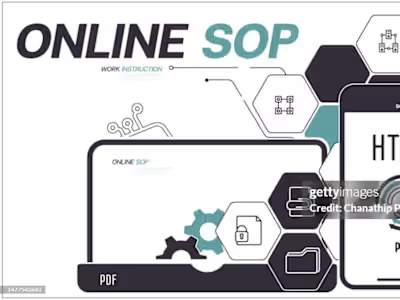Enhancing Internal Controls for Financial Stability
In 2020, I undertook a significant project aimed at preparing a large local company, with revenues exceeding USD 12 million, for acquisition through comprehensive reengineering of its financial processes. This endeavor involved several critical steps and methodologies typical of business process reengineering (BPR).
Overview of the Project
The primary goal was to enhance the company's financial processes to make it more attractive for acquisition. This involved an end-to-end reengineering approach, which focuses on optimizing all aspects of a process from start to finish, eliminating redundancies, and improving efficiency.
Key Steps in the Reengineering Process
Initiation and Stakeholder Engagement: The first phase involved identifying key stakeholders within the organization. Engaging these stakeholders was crucial as their insights would guide the reengineering efforts and ensure alignment with organizational goals
Assessment and Analysis: A thorough analysis of existing financial processes was conducted. This included mapping out current workflows to identify bottlenecks, redundancies, and inefficiencies. Techniques such as process mapping were employed to visualize these workflows and pinpoint areas needing improvement
Designing New Processes: Based on the analysis, new streamlined processes were designed. This step often involves radical changes rather than minor tweaks, aiming for significant improvements in productivity and quality. The focus was on creating processes that not only met current needs but also anticipated future requirements post-acquisition.
Implementation: The newly designed processes were piloted before full-scale implementation. This phase allowed for adjustments based on real-world feedback, ensuring that the new systems were practical and effective in addressing identified issues
Monitoring and Continuous Improvement: After implementation, continuous monitoring was essential to assess the effectiveness of the new processes. Key Performance Indicators (KPIs) were established to measure success and guide ongoing improvements
Benefits Realized
The reengineering project yielded several benefits:
Increased Efficiency: By eliminating unnecessary steps and automating processes where possible, overall operational efficiency improved significantly.
Cost Reduction: Streamlined processes often lead to reduced operational costs, which is particularly attractive to potential acquirers.
Enhanced Financial Reporting: Improved accuracy and timeliness in financial reporting made the company more transparent and trustworthy in the eyes of investors.
Stronger Market Positioning: A well-prepared financial structure positioned the company favorably for acquisition discussions.
Conclusion
This project exemplified how effective business process reengineering can transform a company’s financial operations, making it more competitive and appealing for acquisition.
Like this project
Posted Nov 10, 2024
Conducted a thorough review of internal controls for a large corporation, implementing solutions to significantly reduce the risk of financial discrepancies.
Likes
0
Views
4



